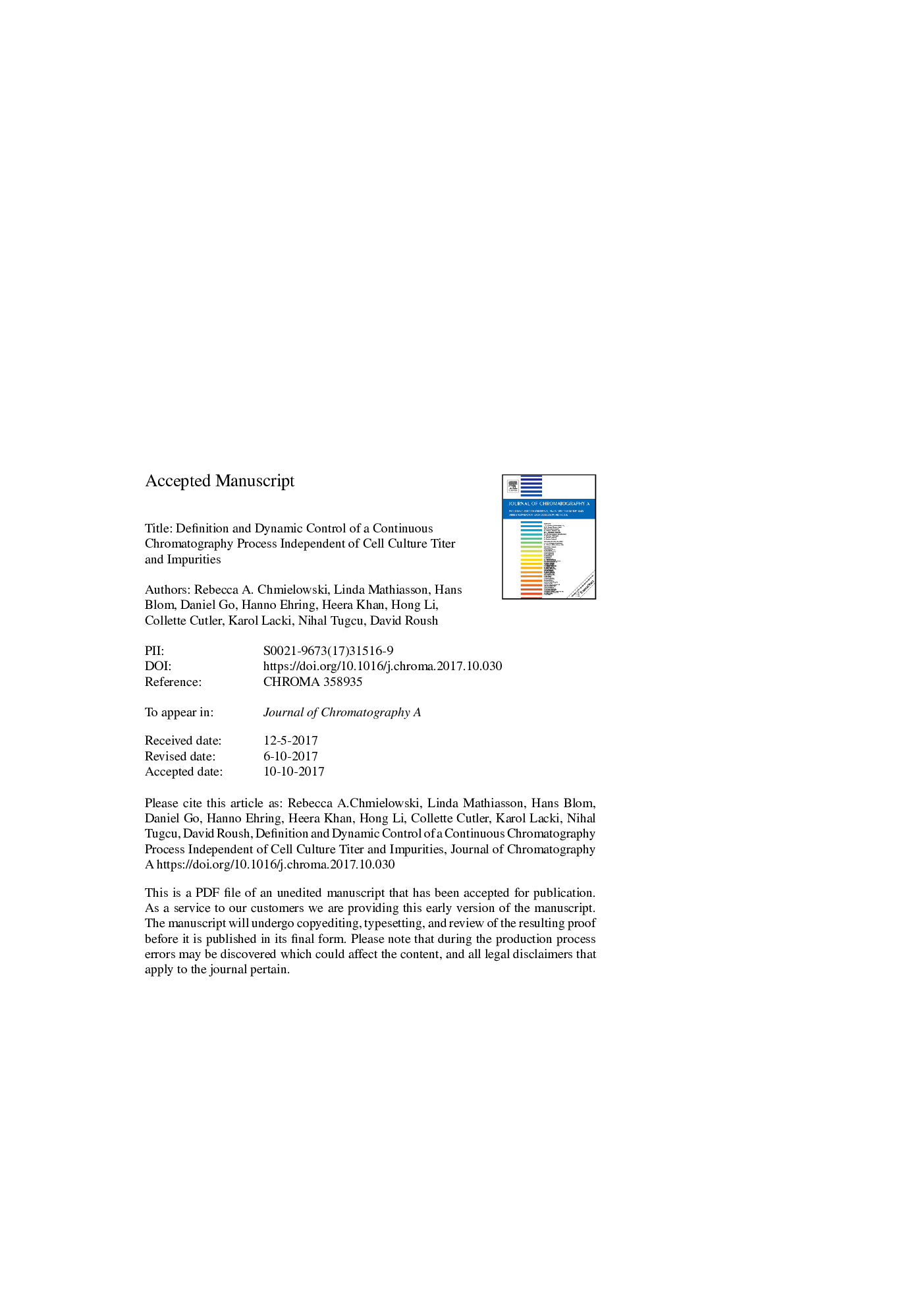| Article ID | Journal | Published Year | Pages | File Type |
|---|---|---|---|---|
| 7609511 | Journal of Chromatography A | 2017 | 33 Pages |
Abstract
Recent studies have provided methods to optimize and improve the design of PCC for cell culture titers up to about 3Â g/L. This paper defines a continuous loading strategy for PCC that is independent of cell culture background and encompasses cell culture titers up to about 31Â g/L. Initial experimentation showed a challenge with determining a difference in change in UV280Â nm signal (ie. ÎUV) between cell culture feed and monoclonal antibody (mAb) concentration. Further investigation revealed UV280Â nm absorbance of the cell culture feedstock without antibody was outside of the linear range of detection for a given cell pathlength. Additional experimentation showed the difference in ÎUV for various cell culture feeds can be either theoretically predicted by Beer's Law given a known absorbance of the media background and impurities or experimentally determined using various UV280Â nm cell pathlengths. Based on these results, a 0.35Â mm pathlength at UV280Â nm was chosen for dynamic control to overcome the background signal. The pore diffusion model showed good agreement with the experimental frontal analysis data, which resulted in definition of a ÎUV setpoint range between 20 and 70% for 3C-PCC experiments. Product quality of the elution pools was acceptable between various cell culture feeds and titers up to about 41Â g/L. Results indicated the following ÎUV setpoints to achieve robust dynamic control and maintain 3C-PCC yield: â¼20-45% for titers greater than 10Â g/L depending on UV absorbance of the HCCF and â¼45-70% for titers of up to 10Â g/L independent of UV absorbance of the HCCF. The strategy and results presented in this paper show column loading in a continuous chromatography step can be dynamically controlled independent of the cell culture feedstock and titer, and allow for enhanced process control built into the downstream continuous operations.
Keywords
Related Topics
Physical Sciences and Engineering
Chemistry
Analytical Chemistry
Authors
Rebecca A. Chmielowski, Linda Mathiasson, Hans Blom, Daniel Go, Hanno Ehring, Heera Khan, Hong Li, Collette Cutler, Karol Lacki, Nihal Tugcu, David Roush,
